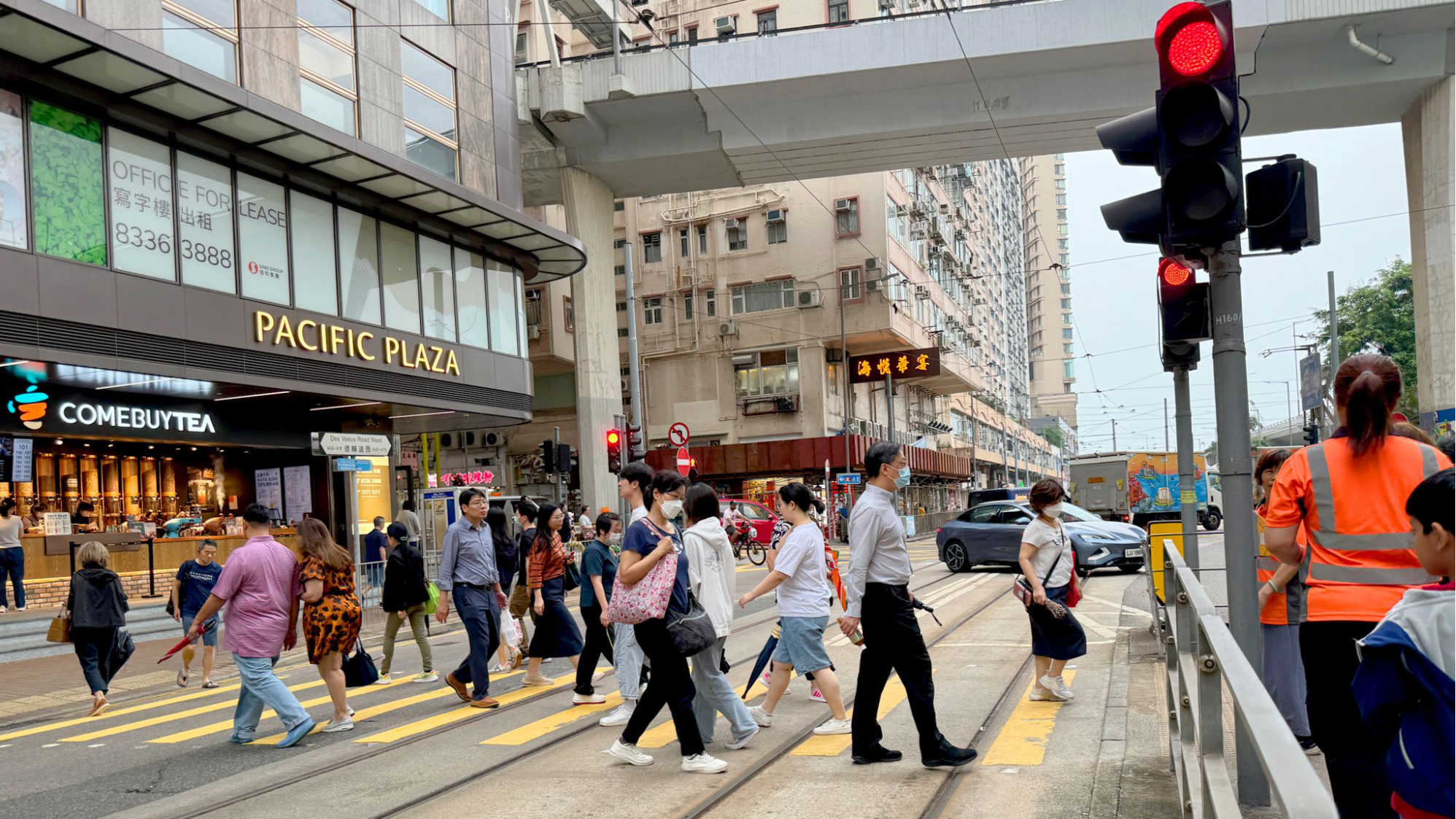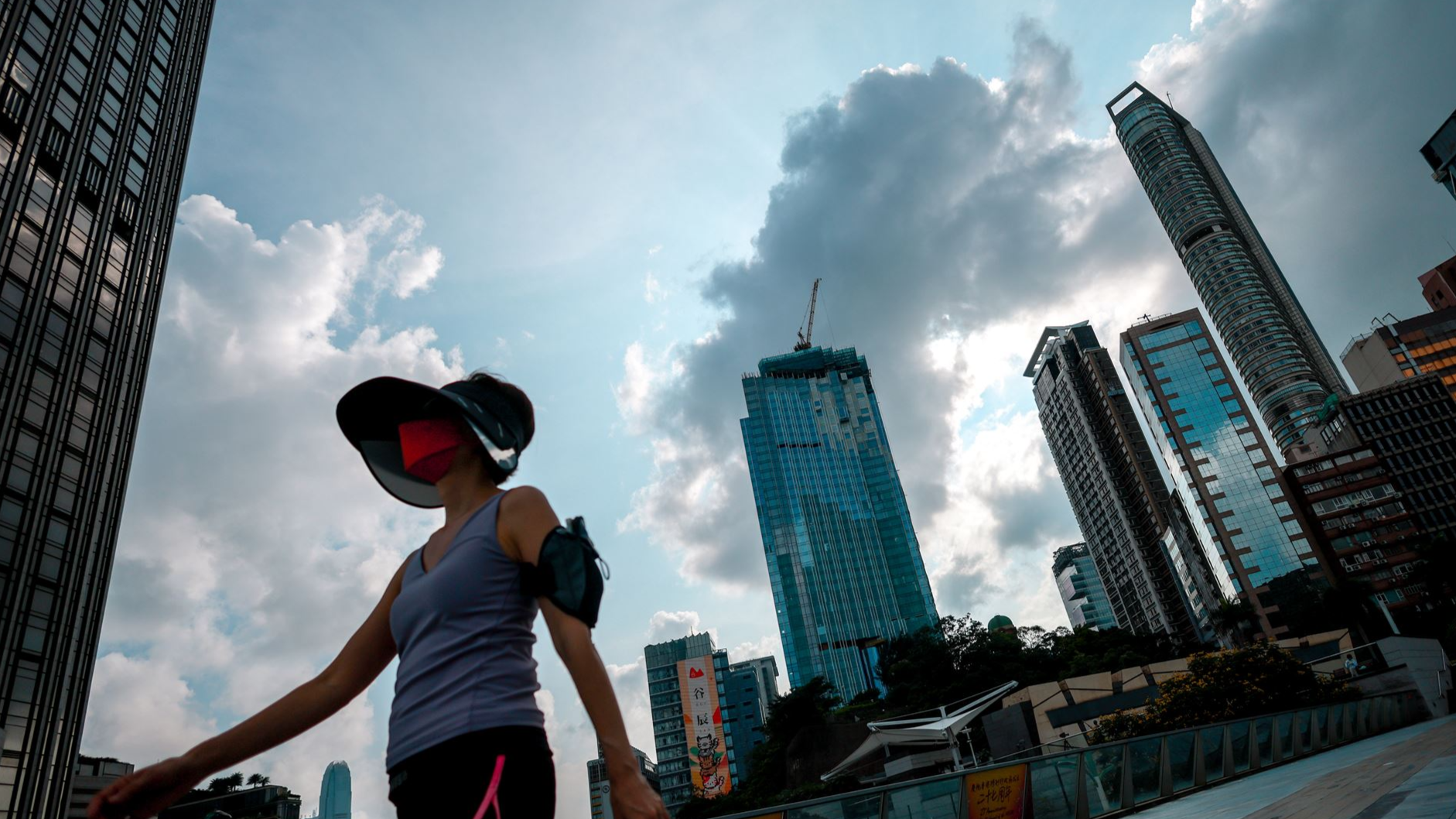
A local NGO called on the government to provide subsidies and heat-relief essentials, such as fans and window shades, to residents in substandard housing to help them cope with extreme temperatures.
The Society for Community Organisation made the appeal in a survey released on Sunday, as Hong Kong recorded 34.8 degrees Celsius, the hottest day of the year so far.
The hot weather warning has been in effect for 13 of the past 14 days, placing a severe strain on the health and finances of disadvantaged communities.
ALSO READ: HK records hottest temperature so far this year on Sunday
On Monday, the mercury rose to about 33°C around noontime at the Hong Kong Observatory in Tsim Sha Tsui and the hot weather warning was again issued, prompting authorities to remind the public to take precautions against heatstroke. In Sheung Shui in the New Territories, the temperature reached 36.4°C around 3 pm, according to the observatory.
More than 220,000 people in Hong Kong are currently renting housing of poor quality, such as wooden huts, squatter huts and rooftop structures, the survey — conducted by the Society for Community Organisation (SoCO) — revealed
More than 220,000 people in Hong Kong are currently renting housing of poor quality, such as wooden huts, squatter huts and rooftop structures, often built with heat-conducting materials like iron and aluminum sheets.
According to the government’s latest data, the number of people living in subdivided units increased to 216,000 in 2021.
ALSO READ: April heat breaks Hong Kong’s 140-year record
This summer, SoCO interviewed 308 tenants living in poor housing and found that 90 percent of them had suffered severe physical discomfort due to the heat, alongside hair loss, mental anguish, sleeplessness, skin disorders, and dizziness.
The temperature inside a tin shack in Kwun Tong reached 41°C, while some subdivided units and cage homes with air-conditioning also recorded temperatures of 30°C to 32°C, the survey showed.
"The heat is absolutely overwhelming in these tiny, poorly ventilated spaces," a member of SoCO said when releasing the survey on Sunday. "Families are spending a disproportionate amount of their limited income just trying to stay cool." With median family wages 50 percent lower than the Hong Kong average, many subdivided flat dwellers are unable to afford basic cooling devices such as air conditioning.
The survey also found that some landlords are suspected of overcharging for water and electricity. Up to 75 percent of the interviewees were paying higher than the official water rates, while 20 percent faced electricity hikes even when official tariffs dropped.
READ MORE: A March with record-breaking high temperature for HK
SoCO suggests that the government should provide additional subsidies to those living in poor housing conditions during hot weather spells, assist them with installing additional devices to combat the heat, and accelerate the supply of transitional housing.
Other advice from the organization includes mandating the installation of individual water and electricity meters in subdivided units, to prevent exploitation by unscrupulous landlords. It is also pushing for anonymous complaints channels and stronger enforcement measures, as 80 percent of tenants currently refrain from reporting overcharging due to fear of retaliation.
The organization also proposes expanding the opening times for summer retreat facilities in schools and communities to help grassroots families overcome the challenges.
"With multipronged policies and community support, we can ensure subdivided-flat residents can weather the summer heat with dignity," a spokesperson for SoCO said. "No one should have to suffer in a 'furnace' just to keep a roof over their head."

Legislator Bill Tang Ka-piu said that apart from the hot weather, the summer rainstorms pose an additional challenge, causing leaks in subdivided units, and adding that the issue cannot be resolved in a short time.
He proposed the Buildings Department conduct investigations into illegal and environmentally hazardous subdivided units. This would involve repairing parts that are prone to leaks and installing windows to facilitate air circulation. Tang emphasized the importance of ensuring that the cost of these measures is borne by homeowners and not passed on as an additional burden to low-income tenants.
He said the government could provide simple facilities to help the grassroots, such as compact hanging fans that occupy minimal space, glass stickers, and blackout screens that can block out sunlight.
Professor Yau Yung, of the Department of Sociology and Social Policy at Lingnan University, said that in recent years, extreme weather in Hong Kong has become more severe, which has disproportionately increased the burden on low-income residents. The heat forces those who cannot afford electricity to seek refuge outside, significantly disrupting their daily lives.
Yau advised the government to open up more summer retreat facilities and extend their hours of operation. He hopes that government officials collaborate with social organizations to offer more temporary summer shelters and ensure that information about the facilities reaches those most in need.
The Civil Affairs Department announced on Sunday that it will continue to open 19 community halls and centers as temporary summer retreat facilities, from 10:30 pm to 8 am, during the period of the hot weather warning.
A recent study conducted by various Hong Kong universities on extreme weather forecast that from 2040 to 2049, the city will experience a 50 percent increase in hot nights. The extreme rainfall will be more intense and frequent, with a maximum hourly rainfall of up to 230 millimeters, an increase of over 40 percent compared to 2023’s record rainfall. The likelihood of landslides and severe flooding will increase significantly.


